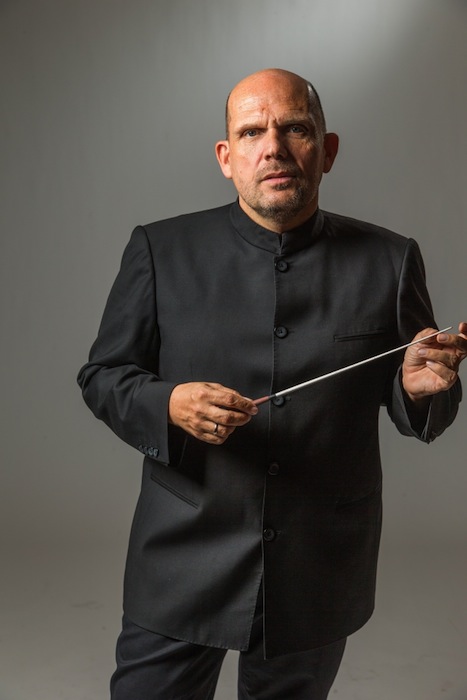Van Zweden leads DSO in a glorious Rachmaninoff Second

Jaap van Zweden conducted the Dallas Symphony Orchestra in music of Haydn and Rachmaninoff Thursday night.
Rachmaninoff’s Second Symphony presented a worthy test to exiting music director Jaap van Zweden and the Dallas Symphony Orchestra Thursday night at Meyerson Symphony Center: A combined challenge of epic structure and heated lyricism in a Tolstoyan symphonic drama that can turn mushy in lesser hands.
Van Zweden — who departs Dallas after this season to become music director of the New York Philharmonic — succeeded on both fronts, the structural and emotional. He began Thursday’s musical odyssey by coaxing a restrained brilliance from the string section in the extended introduction. Here, Rachmaninoff combines complex baroque counterpoint with a late romantic sensibility; van Zweden created a captivating intensity while husbanding the orchestral resources for the symphonic pilgrimage that lay ahead.
After the pivotal English horn solo, gorgeously shaped by David Matthews, the same carefully paced restraint built gradually and relentlessly through the exposition of the quick principal theme and the luxuriantly melodic reply. The movement’s hair-raising climax emerged gloriously, followed by the pungent, almost violently reactive coda.
Van Zweden continued to explore Rachmaninoff’s interplay of rich, full textures with carefully sculpted solo passages in the Allegro, with its swift steeplechase main theme alternating with lavish romantic outbursts. Although the ensemble was occasionally rough here, the precision of the strings in the rapid-fire fugue was impressive.
The soaring main theme of the ensuing Adagio has, of course, been notoriously exploited by the commercial music industry; van Zweden’s concise, economical reading of the movement avoided the swooping weepiness often attached to the main tune for an experience that gave the audience Rachmaninoff at his best rather than his worst.
In the Tchaikovskyan final movement, with its interspersed moments of triumph and longing, van Zweden’s carefully calculated progression produced a fine sense of romantic apotheosis and fulfillment of the composer’s visionary exploration of symphonic form.
The concert opened with Haydn’s Sinfonia Concertante in B-flat, featuring DSO members violinist Nathan Olson, oboist Erin Hannigan, bassoonist Ted Soluri, and cellist Theodore Harvey, the solo ensemble positioned in front of the orchestra. Placing Haydn next to Rachmaninoff is, on paper, an excellent programing strategy, contrasting 18th-century central European classicism with late romantic Russian romanticism. This combination can, at the same time, subtly point to the influence of Haydn’s structural innovations on Rachmaninoff.
In this case, however, conductor van Zweden produced a disappointingly bland, workaday reading; among the soloists, only violinist Olson managed to give a strong impression. The high point of this competent yet unremarkable performance arrived in the bold unison opening of the final Allegro, which in turn breaks into a dramatic conversation in which violinist Olson delivered quick, brilliant pronouncements.
The program will be repeated 7:30 p.m. Friday and Saturday at Meyerson Symphony Center. mydso.com; 214-692-0203.


